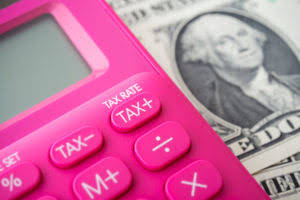Content

The French generally accepted accounting principles chart of accounts layout is used in France, Belgium, Spain and many francophone countries. The use of the French GAAP chart of accounts layout is stated in French law.
- There are 3 fundamental rules that need to be followed when designing a new chart of accounts.
- Use ledger accounts to analyze your income, expenditure, assets, liabilities and capital when running your management reports.
- Metadata, or « data about data. » The Chart of accounts is in itself Metadata.
- In some cases, part or all of the expense accounts simply are listed in alphabetical order.
- For a SaaS company, hosting fees are a clear candidate for the cost of revenue account.
- For example, the cash account , may have the reference number 101.
The JD Edwards EnterpriseOne system uses the business unit.object.subsidiary format for account numbers. You can use periods, commas, or other user-defined symbols to separate the components of the account number. The support team is equip with a special tool to import your favorite GL chart and then reassigned all 3 digit code into the 4 digit code structure.
Chart Of Accounts Outline
The object.subsidiary represents what type of transaction is being created, such as rent or supplies expense and sales revenue. An object is a description of the transaction and a subsidiary is an expanded description of the object account. The chart of accounts is a list of all of the accounts used by your business.

An international corporation with several divisions may need thousands of accounts, whereas a small local retailer may need as few as one hundred accounts. From the Chart of Accounts Master window, you can edit, change, and delete chart of accounts. You can also access chart of accounts history, allocations, special functions, edit categories, close G/L periods, and edit prior years.
Make Business Decisions
The chart of accounts simplifies the accounting process for companies that have multiple business domains. If you have business functions like production, selling, financing, etc., you should maintain separate books of accounts for all of them. The chart of accounts will help you consolidate all these accounts while preparing the annual financial statements. While preparing Chart of Accounts Numbering the chart of accounts, you can start with numbering the current assets and then can move on to the fixed cost ones. The assets ,liabilities, and shareholders’ equity form a part of the balance sheet. These major accounts are further broken down into several categories. All of these sub-categories are treated uniquely while they are recorded in the chart of accounts.

Map your Facilities and Related category down to office expenses, rent, repairs, and utilities—but don’t make your gas and water bills separate accounts. One of the keys to building a CoA structure that works for your business is to know which general ledger best practices to follow and which ones may not be necessary. Subledger transactions post to the same major account, rather than to different accounts. You assign a level of detail to each account to control how amounts are rolled up, or summarized, into a balance for reporting purposes. The system displays the values for category codes 09/01–09/43 in the Account Cat 1–Account Cat 43 fields on the Work With Accounts form. After you have a complete list of transaction descriptions, you can assign numeric values to each description.
Income Or Revenue
For Example, number your Cash in Checking account 1000 and your accounts Receivable account 1100. Depending on the size of the company, the chart of accounts may include a few dozen accounts or a few thousand. Grouping https://www.bookstime.com/ similar accounts will allow you to quantify each group for easier understanding of the company’s financial position. The chart of accounts is designed to be a map of your business and its various financial parts.
- An account might simply be named “insurance offset.” What does that mean?
- If you start with a small number of accounts and then exponentially expand the number of accounts over time, it becomes very difficult to obtain reliable comparable financial information from year after year.
- Equity- These accounts track what the owners put into the business and the claims the owners have against the assets.
- Setting up a chart of accounts can provide a helpful tool that enables a company’s management to easily record transactions, prepare financial statements, and review revenues and expenses in detail.
- Indirect costs are overhead expenses that relate to sales, but the company cannot trace them to a particular product.
- You can then print selected reports that include all of your receivable accounts.
For example, all companies have inventory accounts or an account for miscellaneous expenditures. First, for revenue, think about your different revenue streams and group them into broad functional categories. Three or four categories are usually sufficient for a small or medium-size business , or even just one might be enough. To decide on whether or not to use numbers in your Chart of Accounts, examine your personal list of accounts to be added to the Chart of Accounts in the software. A well-designed chart of accounts will help you plan, analyze, and control your business results.
How To Adjust Your Chart Of Accounts
The chart of accounts also generates reports on various financial accounts from time to time. These reports can help you analyze your company’s performance during a given period.You can also use these reports to make comparisons with previous year’s financial performance. Also, the chart of accounts helps you understand your organization’s value. It also gives you a clear picture of how much you owe to its various stakeholders, along with your business’ profits.
Also, the numbering should be consistent to make it easier for management to roll up information of the company from one period to the next. It provides a way to categorize all of the financial transactions that a company conducted during a specific accounting period. Once the account categories have been determined, define the accounts in each account category. Once the accounts have been decided upon, group similar accounts together within each category to form a summary account roll-up (Some accounting systems allow for additional roll-ups). It should let you make better decisions, give you an accurate snapshot of your company’s financial health, and make it easier to follow financial reporting standards.
Definition Of A Chart Of Accounts In Accounting
The numbering system of the owner’s equity account for a large company can continue from the liability accounts and start from 3000 to 3999. A chart of accounts is a list of all your company’s “accounts,” together in one place.
If you have an existing business, you may need to manually enter GIFI codes for your business. Therefore, when crafting a chart of accounts, always consider the tax legislation, financial reporting standards, government regulations and other compliance requirements relevant in your circumstances. The structure of the chart of accounts makes it easier to locate specific accounts, facilitates consistent posting of journal entries, and enables efficient management of financial information over time.
In this case, you credited $15,000 to your loan account , and QuickBooks Online debited $15,000 to your checking account to balance it out. QuickBooks Online plans, for example, support up to 250 accounts. The average small business shouldn’t have to exceed this limit if it sets up its accounts efficiently. For example, if you buy a ladder for your roofing company, you can put it in the « equipment » account under assets, instead of dedicating an entire account to « ladders. » Equity can be called shareholders’ equity in a corporation or owner’s equity in a sole proprietorship. Equity accounts may include common stock, contributed capital (paid-in capital), retained earnings, and drawings.
Division Code
For instance, if an account’s name or description is ambiguous, the bookkeeper can simply look at the prefix to know exactly what it is. An account might simply be named “insurance offset.” What does that mean? The bookkeeper would be able to tell the difference by the account number.
The F0901 table contains an account for each account representative. When you use subledgers to track expenses for account representatives, the system creates a record with a unique subledger for each account in the Account Ledger table . Assign category code values to the remaining accounts in your chart of accounts. You can set up a version for each of the category codes that you use and specify the category code in a processing option for the program.
2 Chart Of Accounts
Assets – Assets usually fall into two categories – current assets and fixed assets. One can easily convert current assets into cash, such as checking accounts, money market, savings account, account receivables, inventory and so on.
Explanation: What Is A Chart Of Accounts?
Money is flowing out of your business, and in exchange, you’re gaining new equipment. This may influence which products we review and write about , but it in no way affects our recommendations or advice, which are grounded in thousands of hours of research. Our partners cannot pay us to guarantee favorable reviews of their products or services. As you can see, each account is listed numerically in financial statement order with the number in the first column and the name or description in the second column. The Spanish generally accepted accounting principles chart of accounts layout is used in Spain.
No Comments